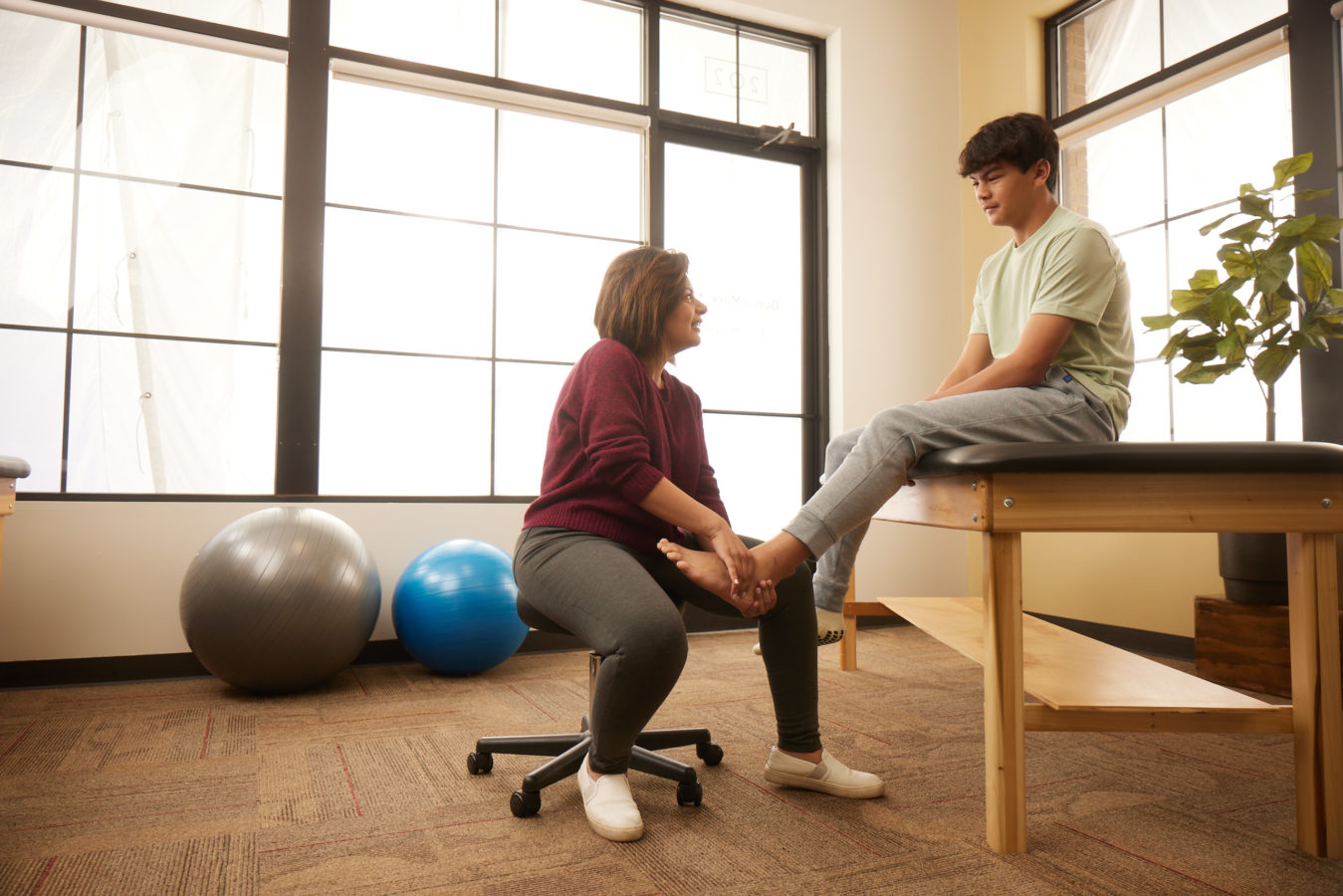
Inflammation of the Achilles tendon, also known as Achilles tendinopathy, is a common overuse injury and is effectively treated with physical therapy.
Achilles tendinitis is an aggravation of the tendon attached to the back of the heel and results from overuse. People with Achilles tendinopathy may experience mild aching on the back of the lower leg after exercise, stiffness in the back of the ankle first thing in the morning, tenderness to touch, difficulty walking, and pain when the tendon is stretched (when you lift your foot or toes). In some cases, the back of the ankle/heel may have swelling, thickening, or be warm to the touch.
Physical therapy for Achilles tendinopathy can identify the cause and address any biomechanical issues causing inflammation.


The first step in treatment for Achilles tendionpathy is to complete a thorough examination of the entire lower extremity, including a biomechanical gait analysis. Then, we can use a wide variety of treatments to reduce inflammation and correct any issues. These may include:
*Services are not available at every location. Visit our Locations page for more details.